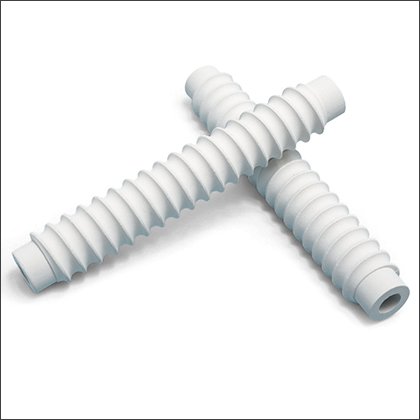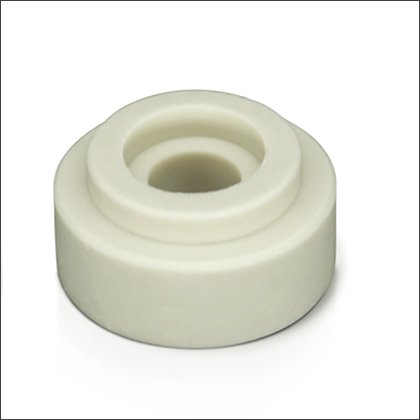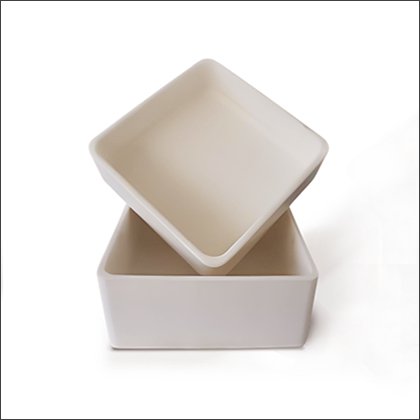Material Overview
Mullite (3Al₂O₃·2SiO₂) is a high-performance aluminosilicate ceramic renowned for its exceptional thermal stability, low thermal expansion (5.3×10⁻⁶/°C), and superior resistance to thermal shock and chemical corrosion. With a melting point of 1,870°C and a density of 3.03 g/cm³, it is widely used in refractory, aerospace, electronics, and energy industries due to its unique needle-like microstructure and excellent mechanical properties.
| Property | Mullite |
| Density (g/cm³) | >2.9 |
| Flexural Strength (MPa) | >110 |
| Modulus of Elasticity (GPa) | >150 |
| Thermal Conductivity (W/m·K) | 5 |
| Max. service temperature (℃) | 1600 |
| Dielectric Strength (kV/mm) | >20 |
Jinghui’s mullite ceramic products are mainly concentrated in the form of ceramic crucibles, ceramic plates, and ceramic rods.
Key Features
- Thermal Shock Resistance: Maintains structural integrity under rapid temperature fluctuations (e.g., furnace linings and kiln furniture).
- Chemical Inertness: Resists acids (except HF), alkalis, and molten metals, ideal for corrosive environments.
- High Temperature Resistance: a high melting point, and can maintain structural stability at high temperatures.
- Low Thermal Conductivity: effectively prevents heat transfer, enhancing energy efficiency in high-temperature systems.
Applications
- Refractory Industry: Kiln linings, blast furnace bricks, and thermal protection systems.
- Electronics: Substrates for integrated circuits and sensor components due to low dielectric loss.
- Aerospace: Engine components and radomes for high-temperature stability.
- Energy: Catalyst supports hydrogen production and solar thermal systems.
Manufacturing Process
Mullite is synthesized via:
- Solid-State Reaction: Mixing alumina and silica precursors (e.g., kaolin) and sintering at 1,500–1,750°C.
- Additive Manufacturing: 3D printing samples with our co-partner’s help.
Mullite outperforms alumina due to its lower thermal expansion coefficient and superior thermal shock resistance. Its needle-like microstructure deflects cracks, enabling stability in cyclic heating (e.g., furnace linings surviving 1,200°C–room temperature cycles). Additionally, mullite’s chemical inertness resists molten slag in steelmaking, reducing maintenance costs by 40%
Mullite’s low dielectric constant (ε ≈ 6.5-7.5 at 1 MHz) minimizes signal delay in high-frequency circuits, critical for 5G and IoT devices. Its thermal expansion closely matches silicon (3×10⁻⁶/°C), reducing interfacial stress in semiconductor packaging. Japanese firms like Hitachi use mullite-glass composites to achieve 14% faster signal transmission than Al₂O₃ substrates.
Yes, mullite ceramics can be made into industrial wear-resistant parts. Its high hardness, excellent wear resistance, and high temperature resistance make it suitable for manufacturing wear-resistant liners, nozzles, bearings, and other parts.
Mullite’s infrared transparency (up to 5 μm wavelength) and resistance to thermal deformation make it ideal for:
- Aerospace: Infrared windows in hypersonic missile guidance systems.
- Energy: Sensor protection tubes in coal gasification reactors (1,500°C).
- Laser Technology: Host matrices for rare-earth-doped fiber lasers, improving beam quality by 20%.






